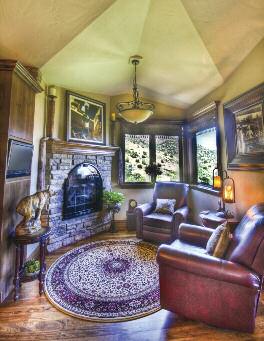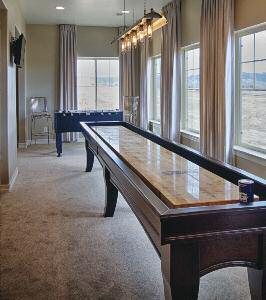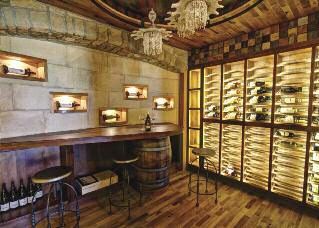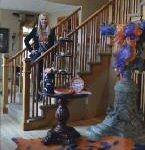A Rock Industry Insider Recalls the Malibu Wildfire that Consumed (Almost) Everything
I miss the change of seasons in New Jersey. Transplanted here in Southern California, I must make do with Football Season, ’Tis the Season and the new TV Season. And then there is that other, more ominous, time of year: Fire Season. In a matter of minutes, it can turn you from a “have” into a “have-not”. For my friend Sue Sawyer (right), the November 1993 blaze that raged through the Malibu canyon where she lived swallowed more than just her home. It took a bite out of the joie de vivre she once had—the loss of which she is still coming to terms with today. In the early 1990’s, Virgin Records America was in its heyday, and Sawyer was its V.P. of Media Relations. Her clients included Michael Jackson, Tina Turner, Keith Richards, Lenny Kravitz, and The Clash. Over the years she received many gold records from artists such as Cyndi Lauper, Sade, and Cheap Trick that she hung on her living room wall. Her five platinum albums from Michael Jackson had an inscription from Michael that read Dear Sue, thanks for the hard work. These also were displayed in her home. A triptych photograph taken in the early 1980’s, showed Sue sitting on a sofa with Ozzy and Sharon Osbourne. Ozzy was promoting his first solo album, and a marketing meeting was set up at Epic Records. Ozzy walked in with a photographer, which was unusual; this should have been the tip-off for Sawyer that he had something up his sleeve (or in his pockets, to be exact). When everyone was seated, Ozzy produced a white dove from his coat, smiled sweetly at it—and bit its head off. He reached in his other pocket and pulled out another white dove and prepared to dine on that one, but the conference room erupted in protest, and the bird and everyone else in the room was saved from another unsavory spectacle. Although the photographs showed Sue’s expression going from Oh, what a pretty bird Ozzy has to utter revulsion, the triptych was exhibited on her walls to prove that, yes, this really did happen… I was there. The fire took everything. Sawyer’s “to die for” record collection? Vaporized. Her priceless collectibles? Incinerated. Early punk rock singles, including Elvis Costello when he was with Stiff Records? Up in smoke. A few charred 4×4’s, the bottom drum to her Weber grill, the blackened and ash filled carcass of her boyfriend’s vintage1967 metallic gold Thunderbird, the blob of melted coins from her piggybank, and the over-baked Halloween pumpkin that was sitting on the porch, was all that was left. There wasn’t even a place to hang the red UNSAFE FOR OCCUPANCY notification, so it was left under a rock. After the fire ran its course and Sawyer was allowed back on to the smoldering property, it was her incinerated books that she mourned the most. Everything that Graham Greene and Raymond Chandler wrote she collected. She had all of her childhood books, especially Winnie-The-Pooh, lovingly placed on bookshelves. “I would look at my books and it gave me a kind of a…hug,” she recalls. “I don’t have that now.” The literary collection was her treasure. Through the day-today roller coaster ride that was her job, those books provided a sense that everything was going to be all right.
It kept her grounded in a world of music icons and crazy, all-night industry parties. Sawyer has since acquired more books to fill new shelves, but the concertized connection to her younger, more carefree self was gone; as was the piano that she was more than proficient in playing. “When I was seven, I could play Rachmaninov in C sharp minor,” Sawyer says. She hasn’t owned a piano since she found the twisted remains of its soundboard nestled in the ash and soot of what was once her living room. “My house was completely gone.” The great Malibu fire of 1993 burned for three days. Sue Sawyer and 267 others lost their homes. Among her burnt-out neighbors were Sean Penn and Madonna, Ali MacGraw, Dwight Yokum, and Roy Orbison’s widow, Barbara. Three people perished in the fire, which was fueled by a combination of oil-rich and highly combustible chaparral, severe drought, and the hot, dry Santa Ana winds that roared through the canyon. In the first 10 minutes the fire spread from one acre to 200, and within an hour it had scorched over 1,000. It was about 20 minutes into the burn that Sawyer knew her house was in its path, and she had to get home to save her pets. Normally, there were a lot of meetings on Tuesday mornings, but she happened to be in her office with the television on. There was a breaking news bulletin about a fire sweeping toward the sea. “I knew this was no small deal by the way the newscasters talked about it,” she recalls. “And I knew my house was directly between the origin of the fire and the ocean.” The sick feeling that started to take hold of Sawyer was confirmed when a neighbor called. He told her he was evacuating and would take her Rhodesian Ridgeback puppy, but she needed to come and grab her cats. Driving along Pacific Coast Highway toward he
r threatened home, she was struck by the surrealism of it all. “The ocean was glittery with the sun bouncing on the surface, and the sky was such a beautiful blue,” she remembers. “And then there was this huge plume of smoke going up into the sky.” There was a state-of-the art fire station with a helicopter pad just up the road from where she lived. Would her home be spared? She knows now that when an out-of-control fire is in the mood to burn, there’s not much you can do about it. She reached her home with minutes to spare. With two cats and one cat carrier, she ended up stuffing one in a pillow case and tossing both in the car. Then she bolted back into the house to save what she could. It was about 1:30 in the afternoon and the sky had darkened with soot. Ash was everywhere, inside the house as well as out,
and an orange glow was licking at the ridge line, edging ever closer. “I was rushing around sick to my stomach,” Sawyer says. “There was no rhyme or reason to what I was putting in the car. I grabbed a photo album, my skis, a computer, and bicycles.” “But not enough clothes,” she chuckles wryly. “Next time I’ll pack better.” There was only one way out of the canyon; if an ember had leapfrogged onto her escape route, there would have been no way out. She took one last look at her home and—still hopeful that this evacuation would turn out to be nothing more than a fire drill—thought, “This is going to be so much work putting everything back!” Sawyer retreated to her parents’ house in Simi Valley, where a friend phoned to tell her that the street Sue lived on was gone. Wow, she thought, I guess I’m homeless. The next morning, with the fire still gobbling up homes north of Los Angeles, Sawyer’s office phoned to ask if she would be coming in for the marketing meeting. Hey, that’s show biz! “I don’t have a toothbrush or any underwear,” she told the caller, “I think I’ll be a little late for work today.” A month later, Sawyer began her slow return from the weightlessness of the dispossessed. She was living in a rental home in Burbank and her friends and co-workers threw a surprise benefit party to help her pick up the pieces. “This outpouring of kindness was the best thing that happened after the fire,” she says. “These were not the wealthy people of the music business; these were the publicists and writers. The $50 checks that they gave meant so much to me. I still have the checks from the freelance writers. I didn’t cash them. They didn’t have a lot of money, and I still had a job. The irony was that those same people got hit by the [January 1994] earthquake a month later.” Sawyer has regained most of her zest. But part of that happy-go-lucky, young woman vanished that November morning. “I regret the loss of my books and my music,” she says. “And my love letters. I dated a lot of writers, so there were some incredible love letters. I regret that I didn’t really mourn what I had lost; I was changed by the loss, but I didn’t mourn it. I wish I had had some therapy, it would have helped.” From the ashes eventually there is growth. The élan that defined Sue Sawyer both personally and professionally was replaced with a “don’t sweat the little stuff” sensibility that has served her equally well. After a hiatus from the world of media marketing, she is working as an independent publicist for a boutique public relations firm in Los Angeles. And she bought another house, in Glendale, where she can hear her neighbors’ son practicing the piano. With a twinkle in her eye, she says that she would like to start playing again. EDGE








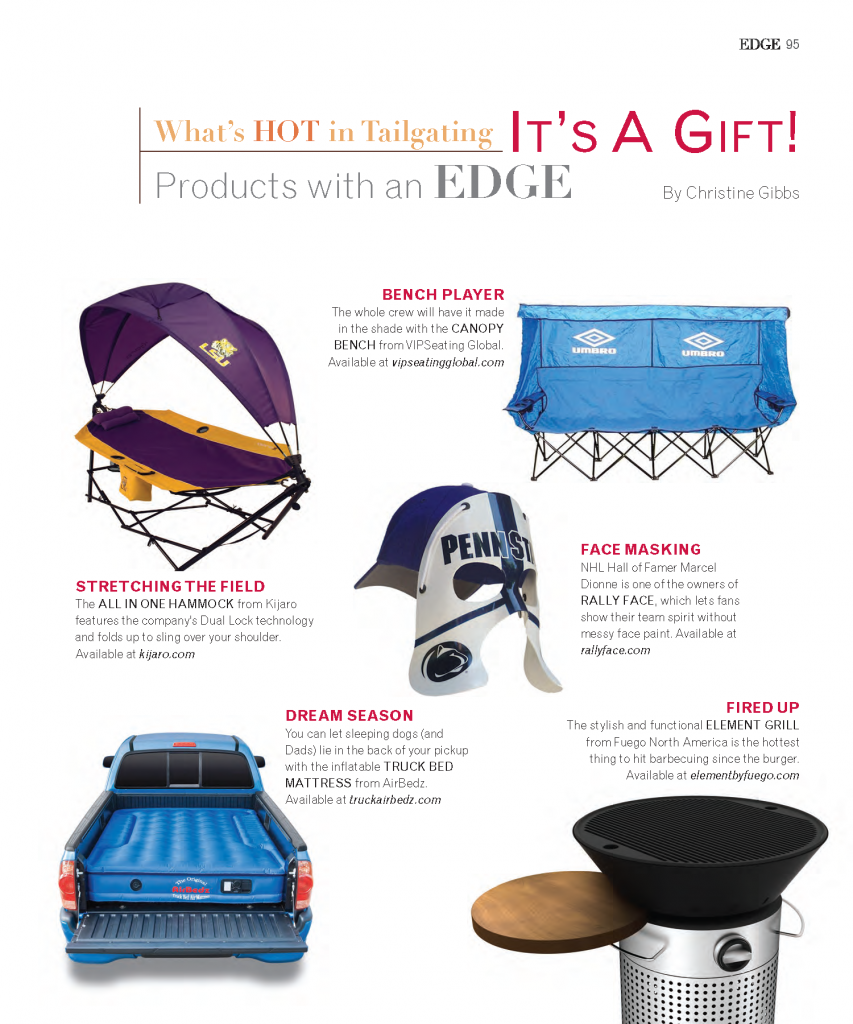
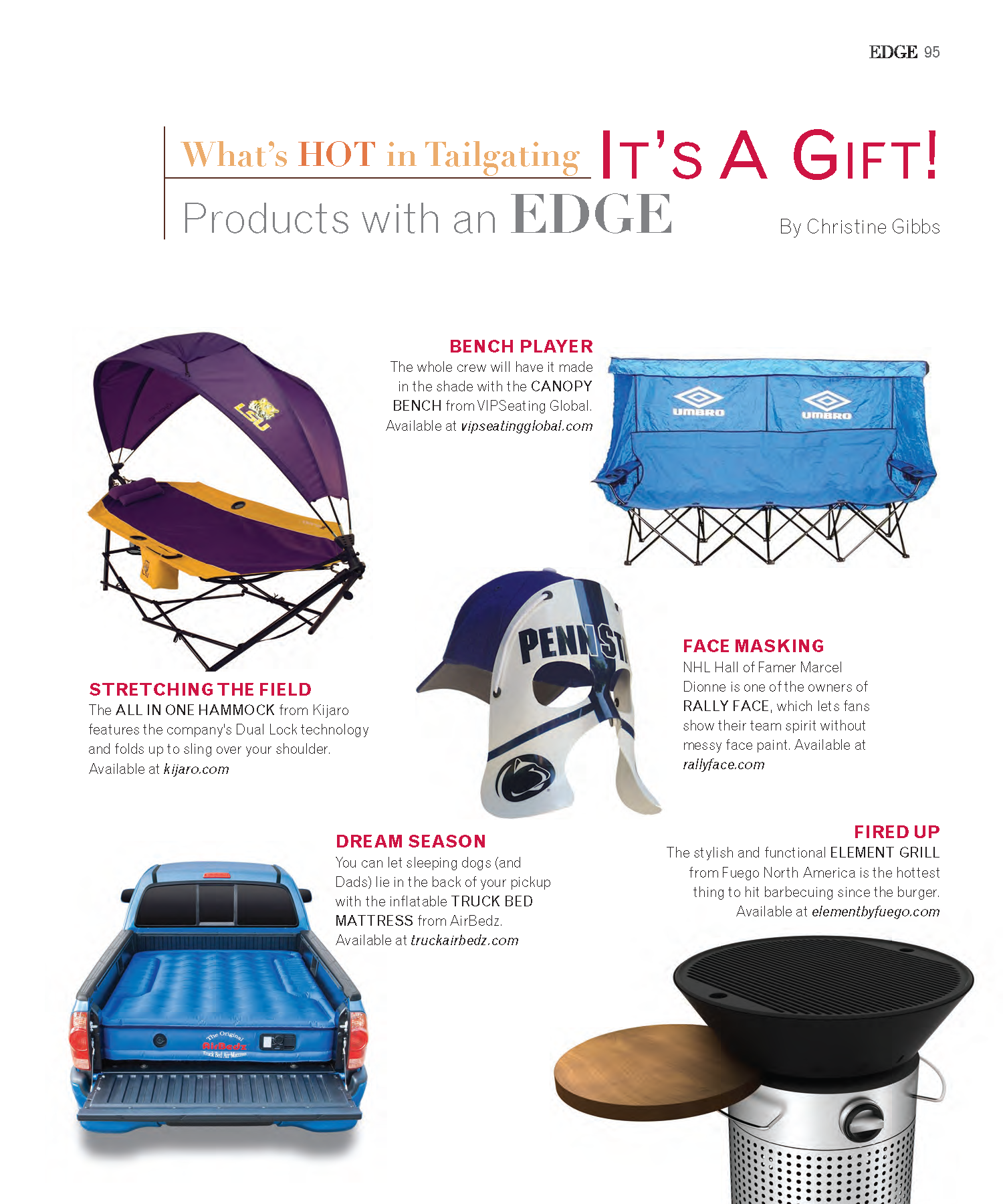
 You may be too old to fire off a letter to Santa, but that’s no reason for the kid in you to let the holidays pass without making a decent wish list. From old games to new electronics, there’s something out there to please even the most discerning inner child. May your season be joy filled…and toy filled!
You may be too old to fire off a letter to Santa, but that’s no reason for the kid in you to let the holidays pass without making a decent wish list. From old games to new electronics, there’s something out there to please even the most discerning inner child. May your season be joy filled…and toy filled!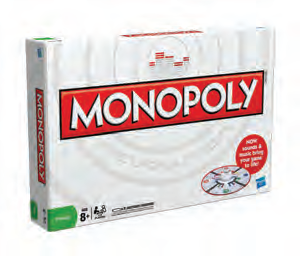 staid old board with sound effects and credit cards instead of cash. Buying houses you can’t afford in real life is fun! History’s happiest accident—the Slinky— has
staid old board with sound effects and credit cards instead of cash. Buying houses you can’t afford in real life is fun! History’s happiest accident—the Slinky— has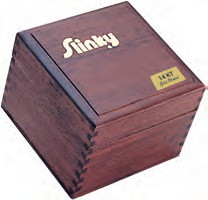
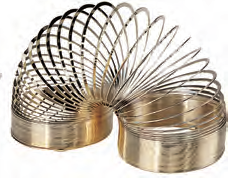 returned to the family staircase in a 14- karat, gold-plated-brass 55th Anniversary Edition ($100 at Buy.com). According to legend, the discovery that the spring could “walk” was completely serendipitous. The rest is history, with more than 300 million sold and still counting. Another beloved blast from the past is the Rubiks Cube, now available in a glitzy high-tech Rubiks
returned to the family staircase in a 14- karat, gold-plated-brass 55th Anniversary Edition ($100 at Buy.com). According to legend, the discovery that the spring could “walk” was completely serendipitous. The rest is history, with more than 300 million sold and still counting. Another beloved blast from the past is the Rubiks Cube, now available in a glitzy high-tech Rubiks TouchCube version (on amazon.com for about $70). Nostalgia is also available in book form. The Official Preppy Handbook, that iconic, tongue-in-cheek treatise on the WASP-y culture of the 1980s, finally has its longa waited sequel. One of the original authors has taken another satirical look at the “new old guard” in True Prep: It’s a Whole New World.
TouchCube version (on amazon.com for about $70). Nostalgia is also available in book form. The Official Preppy Handbook, that iconic, tongue-in-cheek treatise on the WASP-y culture of the 1980s, finally has its longa waited sequel. One of the original authors has taken another satirical look at the “new old guard” in True Prep: It’s a Whole New World.  Buy it in hardcover at your local brick-and-mortar bookseller, or go for the preppier Kindle or iPad editions.
Buy it in hardcover at your local brick-and-mortar bookseller, or go for the preppier Kindle or iPad editions.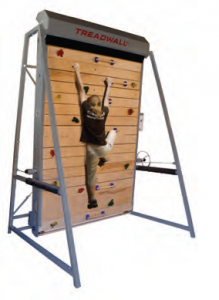 exercise equipment often migrates onto our holiday wish lists. If you think walking (or even running) is for wimps—and can put off that new car purchase for another year—then you might want to trade in your treadmill for a Treadwall, a motorless rotating climbing wall that moves by body weight alone. The good news is you are never more than 1-2 feet off the floor. The bad news is that this will set you back about $10,000 (a KidWall version is less). Check it out at uniquefit1.com or call around to some climber-friendly gyms. If work intrudes on your workout, then consider equipping your home office with a Gaiam BalanceBall Chair (on Amazon.com for about $80).
exercise equipment often migrates onto our holiday wish lists. If you think walking (or even running) is for wimps—and can put off that new car purchase for another year—then you might want to trade in your treadmill for a Treadwall, a motorless rotating climbing wall that moves by body weight alone. The good news is you are never more than 1-2 feet off the floor. The bad news is that this will set you back about $10,000 (a KidWall version is less). Check it out at uniquefit1.com or call around to some climber-friendly gyms. If work intrudes on your workout, then consider equipping your home office with a Gaiam BalanceBall Chair (on Amazon.com for about $80).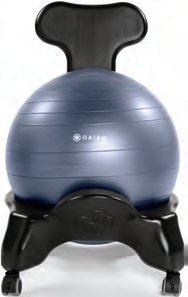 Chiropractically engineered, the chair continues working those core muscles even if you sit at your desk for hours. You’re basically buying the chair’s framework; the rest is BYOB (Bring Your Own Ball). It’s the same balance ball you use in your workout routines. Need to exercise on the road? You’ll have no more excuses away from home thanks to the Tumi Travel Fitness Trainer. It’s equipped with a pedometer, heart rate monitor, stopwatch, MP3 player and FM radio. Look for it at the Tumi store in the Short Hills Mall (or online at tumi.com) for about $165. Masochism comes in myriad forms, not all of which involve calorie burning workouts. Golf leaps to mind. Feeling the
Chiropractically engineered, the chair continues working those core muscles even if you sit at your desk for hours. You’re basically buying the chair’s framework; the rest is BYOB (Bring Your Own Ball). It’s the same balance ball you use in your workout routines. Need to exercise on the road? You’ll have no more excuses away from home thanks to the Tumi Travel Fitness Trainer. It’s equipped with a pedometer, heart rate monitor, stopwatch, MP3 player and FM radio. Look for it at the Tumi store in the Short Hills Mall (or online at tumi.com) for about $165. Masochism comes in myriad forms, not all of which involve calorie burning workouts. Golf leaps to mind. Feeling the 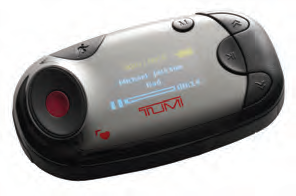 burn in this sport mostly happens between the ears. If greens are what get you blue, then consider the Laser Alignment Putting Trainer, which uses a laser beam to tell you when your putt is perfect— before you even touch the ball. Look for it online at hammacher.com for $329.95.
burn in this sport mostly happens between the ears. If greens are what get you blue, then consider the Laser Alignment Putting Trainer, which uses a laser beam to tell you when your putt is perfect— before you even touch the ball. Look for it online at hammacher.com for $329.95. you’ll be happy to hear that the toys of tomorrow are here today. For instance, you can actually carry around a computer in a pen with the LiveScribe Echo Smartpen. It captures everything you hear, write or say and delivers it with just a tap of the pen ($170 for 4GB and $200 for
you’ll be happy to hear that the toys of tomorrow are here today. For instance, you can actually carry around a computer in a pen with the LiveScribe Echo Smartpen. It captures everything you hear, write or say and delivers it with just a tap of the pen ($170 for 4GB and $200 for  8 GB versions at livescribe.com; also at Target). Or treat yourself to a Gyration Air Mouse, which controls apps on your computer, TV or DVD player with a wave of your hand ($70 and up at amazon.com or compusa.com). Gadget gals are turning cartwheels over the latest Flip Video Cams.
8 GB versions at livescribe.com; also at Target). Or treat yourself to a Gyration Air Mouse, which controls apps on your computer, TV or DVD player with a wave of your hand ($70 and up at amazon.com or compusa.com). Gadget gals are turning cartwheels over the latest Flip Video Cams.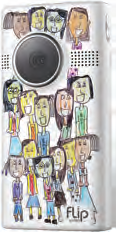
 Their fetching case artwork belies their impressive HD video capabilities, with up to two hours of record time ($150 to $230). Best to go direct to theflip.com, where you can even upload your own photo for a personalized one-of-a-kind camera. If your final wish for 2010 (or final wish, period) is to careen down a snow-covered slope at 70 mph, then you’ll want to invest in an Airboard. Think of these Swiss-engineered inflatables as really Felixible Flyers. Popular for years in Europe, the Airboard has just begun appearing on American mountainsides. You may want to rent before you buy (they sell for $200 to $630 at airboard.com), and probably review your insurance policy. If your thrill-seeking tends to be a bit less public, then the Spy Net Secret Mission Video Watch may be more your speed. It’s a 21st Century take on those old decoder rings buried at the bottom of cereal boxes. It can audio record for 3 hours, video record for 20 minutes, and take still photos with a snake cam that lets you see around corners ($50 at jakks.com and also carried by Kmart).
Their fetching case artwork belies their impressive HD video capabilities, with up to two hours of record time ($150 to $230). Best to go direct to theflip.com, where you can even upload your own photo for a personalized one-of-a-kind camera. If your final wish for 2010 (or final wish, period) is to careen down a snow-covered slope at 70 mph, then you’ll want to invest in an Airboard. Think of these Swiss-engineered inflatables as really Felixible Flyers. Popular for years in Europe, the Airboard has just begun appearing on American mountainsides. You may want to rent before you buy (they sell for $200 to $630 at airboard.com), and probably review your insurance policy. If your thrill-seeking tends to be a bit less public, then the Spy Net Secret Mission Video Watch may be more your speed. It’s a 21st Century take on those old decoder rings buried at the bottom of cereal boxes. It can audio record for 3 hours, video record for 20 minutes, and take still photos with a snake cam that lets you see around corners ($50 at jakks.com and also carried by Kmart).

 Most experts agree that there are four cornerstones to a successful marriage. 1. Trust. 2. Honesty. 3. Unexpressed anger. 4. No sports junk on the walls. Many a man has tested rule #4 only to see that framed jersey or signed photo, without warning, donated to a local charity auction. Like a game of Jumanji, the priceless
Most experts agree that there are four cornerstones to a successful marriage. 1. Trust. 2. Honesty. 3. Unexpressed anger. 4. No sports junk on the walls. Many a man has tested rule #4 only to see that framed jersey or signed photo, without warning, donated to a local charity auction. Like a game of Jumanji, the priceless  heirloom insidiously then works its way into another home, where it initiates marital chaos all over again. Bill Crouse is the exception that proves rule #4. One of the world’s leading authorities on Art Deco posters, his collection may be the best ever assembled. When Crouse purchases a sports poster, it’s invariably a jaw-dropper. In these pages we present a handful of sporting selections from the renowned Crouse Collection. You won’t find these masterpieces at your suburban gala or fundraiser. You will see them in museums and galleries in Europe and the U.S. (including right now at the Guggenheim’s Chaos and Classicism exhibit). If you want to buy them at auction, be prepared to spend somewhere in the mid-six figures!
heirloom insidiously then works its way into another home, where it initiates marital chaos all over again. Bill Crouse is the exception that proves rule #4. One of the world’s leading authorities on Art Deco posters, his collection may be the best ever assembled. When Crouse purchases a sports poster, it’s invariably a jaw-dropper. In these pages we present a handful of sporting selections from the renowned Crouse Collection. You won’t find these masterpieces at your suburban gala or fundraiser. You will see them in museums and galleries in Europe and the U.S. (including right now at the Guggenheim’s Chaos and Classicism exhibit). If you want to buy them at auction, be prepared to spend somewhere in the mid-six figures! Art Deco posterists. In this advertisement for a 1934 tournament, Caroselli used this technique—along with an airbrushed black “cocoon”—to capture the energy of a layup.
Art Deco posterists. In this advertisement for a 1934 tournament, Caroselli used this technique—along with an airbrushed black “cocoon”—to capture the energy of a layup.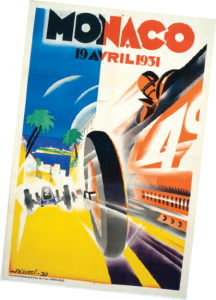 Monaco/19 Avril 1931 • Robert Falcucci (1900-1989) This rarest of Monaco GP posters—possibly the only example in private hands—shows a Mercedes SSK in hot pursuit of a red Bugatti. Falcucci’s use of white streaks running the length of the racer, concentric arcs of white behind to convey the rush of the wind, and the bright palette of red, yellow and blue give this streamlined design great panache. A multitalented painter, decorator and illustrator, Falcucci received his formal training in Paris and served as the historical painter for the French Army.
Monaco/19 Avril 1931 • Robert Falcucci (1900-1989) This rarest of Monaco GP posters—possibly the only example in private hands—shows a Mercedes SSK in hot pursuit of a red Bugatti. Falcucci’s use of white streaks running the length of the racer, concentric arcs of white behind to convey the rush of the wind, and the bright palette of red, yellow and blue give this streamlined design great panache. A multitalented painter, decorator and illustrator, Falcucci received his formal training in Paris and served as the historical painter for the French Army.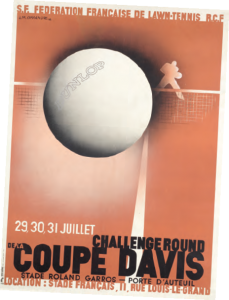
 attention by placing them in the path of an oncoming shot at net. The use of geometry and dynamic perspective in this extraordinarily rare poster— as well as the ease with which the design’s elements are assembled—are superb examples of what made Cassandre the most important Art Deco figure in the history of advertising posters.
attention by placing them in the path of an oncoming shot at net. The use of geometry and dynamic perspective in this extraordinarily rare poster— as well as the ease with which the design’s elements are assembled—are superb examples of what made Cassandre the most important Art Deco figure in the history of advertising posters. III Olympic Winter Games • Witold Gordon (1885-1968) Gordon left no doubt in this iconic poster where the center of the
III Olympic Winter Games • Witold Gordon (1885-1968) Gordon left no doubt in this iconic poster where the center of the  sports universe would be in February of 1932: Lake Placid. These Winter Games—the first held in North America—were opened by New York Governor (and soon-to-be U.S. President) Franklin Roosevelt. Gordon also designed the grand murals at Radio City Music Hall and the 1939 World’s Fair.”
sports universe would be in February of 1932: Lake Placid. These Winter Games—the first held in North America—were opened by New York Governor (and soon-to-be U.S. President) Franklin Roosevelt. Gordon also designed the grand murals at Radio City Music Hall and the 1939 World’s Fair.” 1er Campeonato Mondial de Football • Guillermo Laborde (1886-1940) This poster for the inaugural World Cup is the Holy Grail collectible for soccer fans. Laborde conveys the action and athleticism of the sport with
1er Campeonato Mondial de Football • Guillermo Laborde (1886-1940) This poster for the inaugural World Cup is the Holy Grail collectible for soccer fans. Laborde conveys the action and athleticism of the sport with  just a few linear elements. An acclaimed South American artist and sculptor, he agreed to judge the poster submissions for the 1930 World Cup. Later, Laborde resigned from the panel and submitted two of his own—which came in first and third.
just a few linear elements. An acclaimed South American artist and sculptor, he agreed to judge the poster submissions for the 1930 World Cup. Later, Laborde resigned from the panel and submitted two of his own—which came in first and third.
 That’s fine if your goal is to own an undistinguished sofa-sized oil. But what if you want fine art—the kind that will brighten your life and fatten your bottom line? The answer may be as close as your local gallery. For those who believe you have to cross the Hudson to find investment-grade art, this idea may go against the grain. But the fact is that building a relationship with a gallery (or galleries) here in the Garden State can yield a far greater return—not just in terms of value and quality, but in so many other ways. This applies to the seasoned collector as well as the novice. In fact, if you’re like so many New Jerseyans, the thought of opening your checkbook in a local art gallery is nothing short of terrifying. First things first. Let’s wrap our minds around the reasons New Jerseyans don’t buy art. Above all there is the intimidation factor. Most people are afraid they’ll be taken to the cleaners by an unscrupulous gallery owner.
That’s fine if your goal is to own an undistinguished sofa-sized oil. But what if you want fine art—the kind that will brighten your life and fatten your bottom line? The answer may be as close as your local gallery. For those who believe you have to cross the Hudson to find investment-grade art, this idea may go against the grain. But the fact is that building a relationship with a gallery (or galleries) here in the Garden State can yield a far greater return—not just in terms of value and quality, but in so many other ways. This applies to the seasoned collector as well as the novice. In fact, if you’re like so many New Jerseyans, the thought of opening your checkbook in a local art gallery is nothing short of terrifying. First things first. Let’s wrap our minds around the reasons New Jerseyans don’t buy art. Above all there is the intimidation factor. Most people are afraid they’ll be taken to the cleaners by an unscrupulous gallery owner. Second, they are nervous that their friends will make fun of a purchase that is different and modern, or simply out of character. Feeding this double-barreled paranoia is the fact that—particularly in the case of an abstract piece—one cannot specifically define the level of talent and technical skill involved in producing modern art. And on top of these very legitimate fears is the great, big elephant in the room: Why, when New York City is so close, would anyone buy art in New Jersey in the first place? Permit me to deal with this last objection first. Galleries here in New Jersey are indeed different than most galleries in the city. That is to say that they are friendly and approachable. If you think about it, it makes complete sense. Gallery owners are where they are, and do what they do, because they love and appreciate art. If they were in this business to make a killing, I hate to say it but they would be in Manhattan. What else does New Jersey have to offer art buyers that the city doesn’t? Well, there is a lot of first-rate talent that, for one reason or another, is only shown on this side of the Hudson.
Second, they are nervous that their friends will make fun of a purchase that is different and modern, or simply out of character. Feeding this double-barreled paranoia is the fact that—particularly in the case of an abstract piece—one cannot specifically define the level of talent and technical skill involved in producing modern art. And on top of these very legitimate fears is the great, big elephant in the room: Why, when New York City is so close, would anyone buy art in New Jersey in the first place? Permit me to deal with this last objection first. Galleries here in New Jersey are indeed different than most galleries in the city. That is to say that they are friendly and approachable. If you think about it, it makes complete sense. Gallery owners are where they are, and do what they do, because they love and appreciate art. If they were in this business to make a killing, I hate to say it but they would be in Manhattan. What else does New Jersey have to offer art buyers that the city doesn’t? Well, there is a lot of first-rate talent that, for one reason or another, is only shown on this side of the Hudson.  There is no comparison in terms of service. Try walking into a gallery on West Broadway or Madison Avenue and asking the owner to drive out to your place in Westfield for a consultation. That thud is the sound of his jaw hitting the floor. A gallery owner in or around your town, on the other hand, will likely welcome this opportunity. New Jersey art dealers are genuinely interested in the people who live around them, and cultivating relationships that extend beyond the buying and selling of art. They are part of the fabric of the community. Connecting with a local gallery also happens to be a superb way of adding texture to your social life. Once you’re “on the list” you’ll be invited to opening receptions whenever a new artist is featured. How often do you get to mix and mingle with new people who just happen to share a common interest? The majority of people attending gallery openings are like you—they want to know more about art and the people who buy it. (By the way, a free wine-and-cheese gathering is a wonderful springboard to dinner, a movie, or whatever else you’ve planned for an evening out.) Okay, so what about the financial side of the gallery relationship? Now more than ever, as we balance the merits of saving and spending, it is important to know what you get for your money when you purchase a work of art. Whether the price tag is several hundred or several thousand, dealers who live and work nearby are unlikely to “rip off” customers; they have reputations to uphold. If you happen to be one of the fortunate few who have five or six figures to invest in art, a good dealer will have solid connections to galleries that can point you in the right direction (and more importantly, steer you clear of the wrong direction). Either way, if your appreciation of art is tied to its potential appreciation, make that clear to the gallery owners you deal with.
There is no comparison in terms of service. Try walking into a gallery on West Broadway or Madison Avenue and asking the owner to drive out to your place in Westfield for a consultation. That thud is the sound of his jaw hitting the floor. A gallery owner in or around your town, on the other hand, will likely welcome this opportunity. New Jersey art dealers are genuinely interested in the people who live around them, and cultivating relationships that extend beyond the buying and selling of art. They are part of the fabric of the community. Connecting with a local gallery also happens to be a superb way of adding texture to your social life. Once you’re “on the list” you’ll be invited to opening receptions whenever a new artist is featured. How often do you get to mix and mingle with new people who just happen to share a common interest? The majority of people attending gallery openings are like you—they want to know more about art and the people who buy it. (By the way, a free wine-and-cheese gathering is a wonderful springboard to dinner, a movie, or whatever else you’ve planned for an evening out.) Okay, so what about the financial side of the gallery relationship? Now more than ever, as we balance the merits of saving and spending, it is important to know what you get for your money when you purchase a work of art. Whether the price tag is several hundred or several thousand, dealers who live and work nearby are unlikely to “rip off” customers; they have reputations to uphold. If you happen to be one of the fortunate few who have five or six figures to invest in art, a good dealer will have solid connections to galleries that can point you in the right direction (and more importantly, steer you clear of the wrong direction). Either way, if your appreciation of art is tied to its potential appreciation, make that clear to the gallery owners you deal with. They will help you assess potential purchases (or emerging artists) with that goal in mind. Another advantage to buying in New Jersey—besides the good feeling that comes with supporting a local business— is that gallery owners here may be much more likely to work a deal that fits your finances. Their overhead is lower than in the city, which may translate into wiggle room when you whip out the checkbook. Finally, keep in mind as you shop or budget for fine art that you are buying something that could turn out to be a family treasure. Art is timeless. Art is priceless. Unlike a sofa or granite countertop, it does not depreciate the moment it walks through your front door. If you’ve chosen wisely, in fact, it could appreciate dramatically. And as it moves from your home to your children’s, and then to your children’s children’s and beyond, it serves as a link between the generations. In the meantime, this investment will enhance your quality of life every time you fix your gaze upon it. Indeed, as Pablo Picasso once observed, art “washes away from the soul the dust of everyday life.” Amen to that. Some other art icons have also had a thing or two to say on the subject. Jackson Pollock famously noted that every good painter paints what he is. Rembrandt suggested practicing what you know to make clear what now you do not know. Believe it or not, Michelangelo often insisted, I can actually draw. Clarity and simplicity enabled these great painters to create magnificently complex works of art. When it comes to buying art in the Garden State, a little clarity and simplicity also goes a long way. EDGE
They will help you assess potential purchases (or emerging artists) with that goal in mind. Another advantage to buying in New Jersey—besides the good feeling that comes with supporting a local business— is that gallery owners here may be much more likely to work a deal that fits your finances. Their overhead is lower than in the city, which may translate into wiggle room when you whip out the checkbook. Finally, keep in mind as you shop or budget for fine art that you are buying something that could turn out to be a family treasure. Art is timeless. Art is priceless. Unlike a sofa or granite countertop, it does not depreciate the moment it walks through your front door. If you’ve chosen wisely, in fact, it could appreciate dramatically. And as it moves from your home to your children’s, and then to your children’s children’s and beyond, it serves as a link between the generations. In the meantime, this investment will enhance your quality of life every time you fix your gaze upon it. Indeed, as Pablo Picasso once observed, art “washes away from the soul the dust of everyday life.” Amen to that. Some other art icons have also had a thing or two to say on the subject. Jackson Pollock famously noted that every good painter paints what he is. Rembrandt suggested practicing what you know to make clear what now you do not know. Believe it or not, Michelangelo often insisted, I can actually draw. Clarity and simplicity enabled these great painters to create magnificently complex works of art. When it comes to buying art in the Garden State, a little clarity and simplicity also goes a long way. EDGE 




 Is it too much to ask that people not buy their first saltwater aquarium along with the fishes, live rock, and invertebrates all on their first visit to a pet shop? I experiment constantly, and found the very best aquarium I ever kept was limited to live rocks for a whole year before I put any fish in. I always tell my friends to “grow something” in the water first. No matter how many products are available to help start aquariums quickly, the aquarist’s best friend starting out is time. • Patronize the local brick & mortar pet shop and—I’ll say it again—beware of bargains. Even though it may not be able to compete with Internet prices, your local pet shop was likely opened as a labor of love and expertise; these folks are looking to make a living, not a fortune. Pet shop insiders will be the most generous of people with their time, experience, and good advice. However, be aware of the fishmonger who repeats whatever it is you just said, who agrees with a wayward premise. (Yeah! I always feed live guppies to all my cichlids.) If the advice smells like a bucket of week-old dead fish, this is what you’ll probably have next week if you buy from this guy. I only thank my lucky stars that Clownfish are now being commercially farmed at facilities like the ORA hatchery complex in Ft. Pierce, Florida and need not be collected from the wild. Had Nemo been an equally adorable Banggai Cardinalfish, collection pressures on the small wild populations would definitely have put this species at serious risk, even though it too is able to be bred in captivity; just not enough to supply the demand for fish that a movie like Nemo would generate. Although some of us in the industry wrestle with our consciences, in the end we believe that every person who begins a saltwater aquarium—regardless of the outcome— gains new respect and appreciation for our delicate planet. I can’t think of any other exercise that shows us in such acute detail just how difficult it can be to keep a small being living under our care. Perhaps if more people dedicated themselves to maintaining flourishing saltwater tanks, the Gulf of Mexico would still support a shrimping industry, global warming would be addressed in a more proactive way, and we would realize that the line between the coral reefs of Fiji and the Arthur Kill can be an astoundingly fine one. EDGE
Is it too much to ask that people not buy their first saltwater aquarium along with the fishes, live rock, and invertebrates all on their first visit to a pet shop? I experiment constantly, and found the very best aquarium I ever kept was limited to live rocks for a whole year before I put any fish in. I always tell my friends to “grow something” in the water first. No matter how many products are available to help start aquariums quickly, the aquarist’s best friend starting out is time. • Patronize the local brick & mortar pet shop and—I’ll say it again—beware of bargains. Even though it may not be able to compete with Internet prices, your local pet shop was likely opened as a labor of love and expertise; these folks are looking to make a living, not a fortune. Pet shop insiders will be the most generous of people with their time, experience, and good advice. However, be aware of the fishmonger who repeats whatever it is you just said, who agrees with a wayward premise. (Yeah! I always feed live guppies to all my cichlids.) If the advice smells like a bucket of week-old dead fish, this is what you’ll probably have next week if you buy from this guy. I only thank my lucky stars that Clownfish are now being commercially farmed at facilities like the ORA hatchery complex in Ft. Pierce, Florida and need not be collected from the wild. Had Nemo been an equally adorable Banggai Cardinalfish, collection pressures on the small wild populations would definitely have put this species at serious risk, even though it too is able to be bred in captivity; just not enough to supply the demand for fish that a movie like Nemo would generate. Although some of us in the industry wrestle with our consciences, in the end we believe that every person who begins a saltwater aquarium—regardless of the outcome— gains new respect and appreciation for our delicate planet. I can’t think of any other exercise that shows us in such acute detail just how difficult it can be to keep a small being living under our care. Perhaps if more people dedicated themselves to maintaining flourishing saltwater tanks, the Gulf of Mexico would still support a shrimping industry, global warming would be addressed in a more proactive way, and we would realize that the line between the coral reefs of Fiji and the Arthur Kill can be an astoundingly fine one. EDGE 
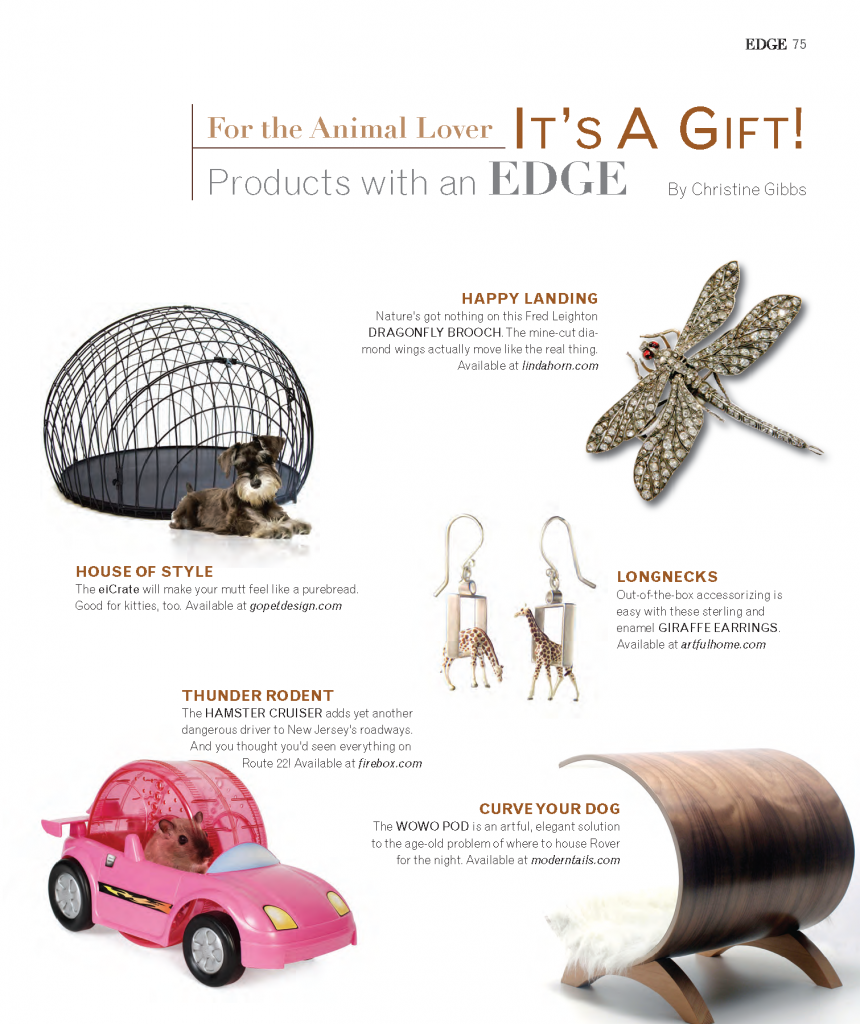



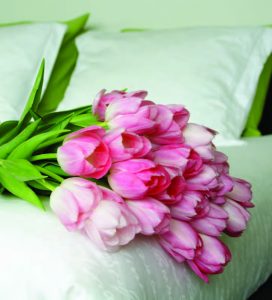

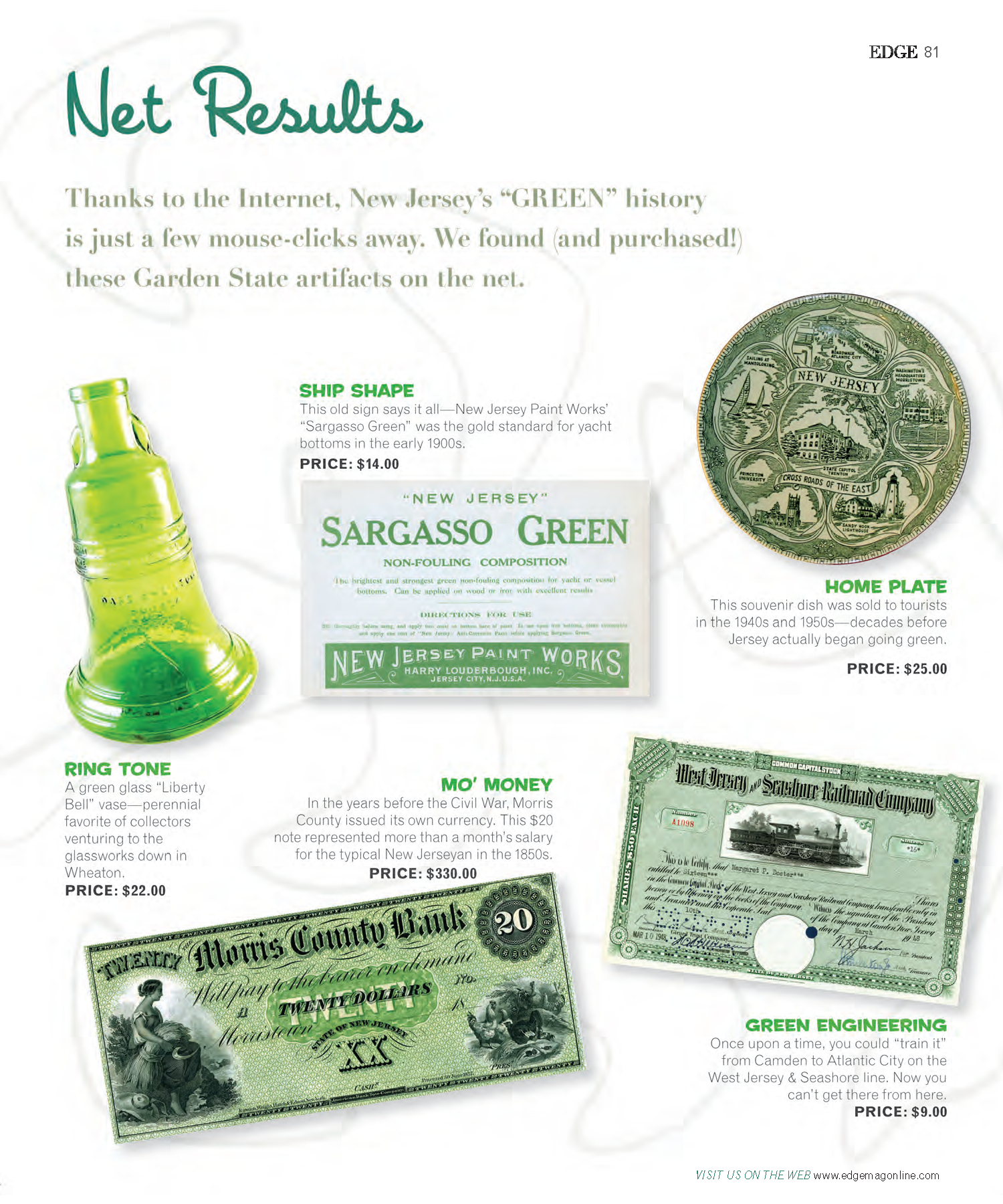








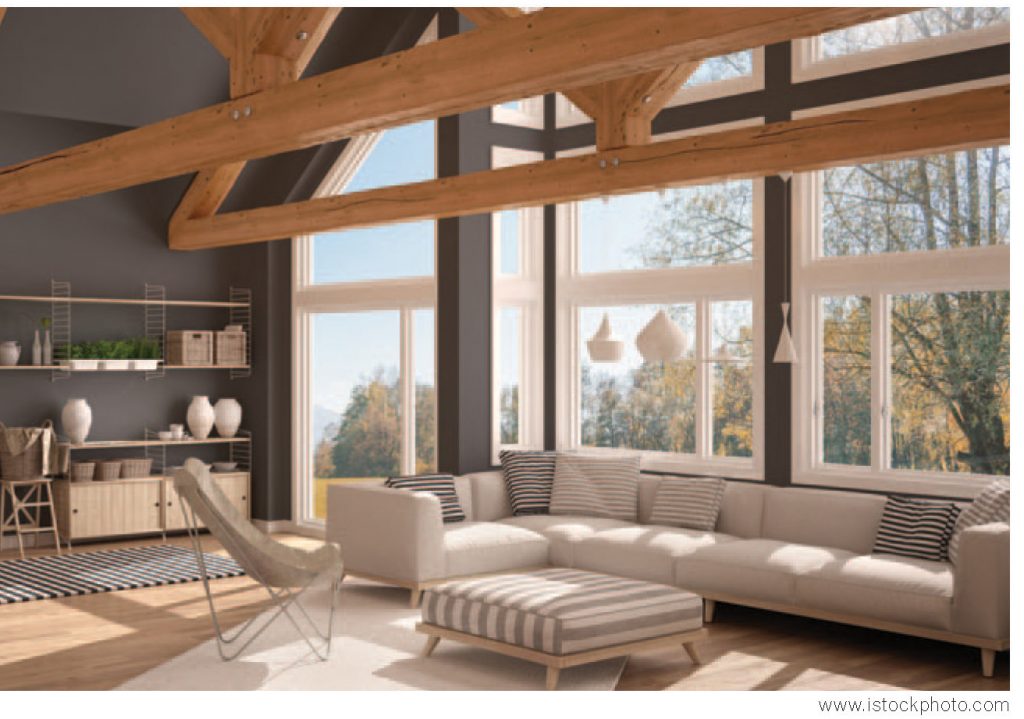





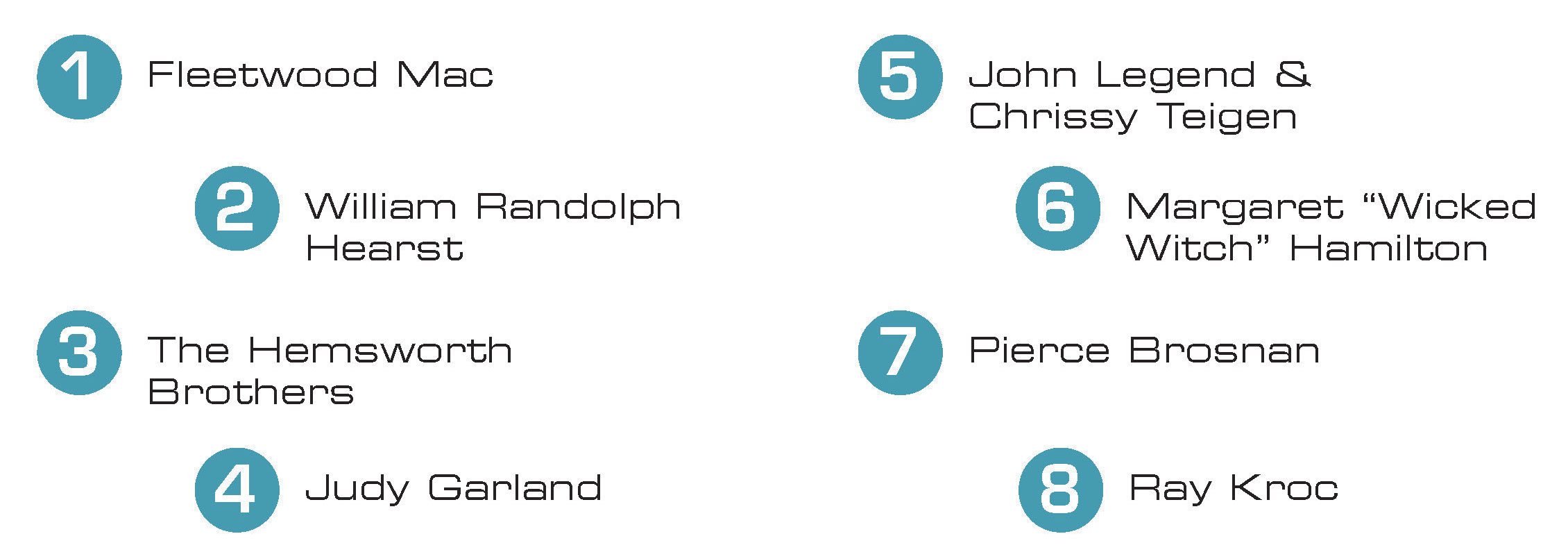


 Some of us have come tantalizingly close, but it’s never quite right, is it? Even the most talented home chefs with “professional” equipment and designer kitchens eventually arrived at this conclusion. In fact, I’ll bet they were the first to pick up the phone and order out once it was safe. So how do you make an honest-to-goodness pizza-parlor pie at home? With an honest-to-goodness pizza oven.
Some of us have come tantalizingly close, but it’s never quite right, is it? Even the most talented home chefs with “professional” equipment and designer kitchens eventually arrived at this conclusion. In fact, I’ll bet they were the first to pick up the phone and order out once it was safe. So how do you make an honest-to-goodness pizza-parlor pie at home? With an honest-to-goodness pizza oven.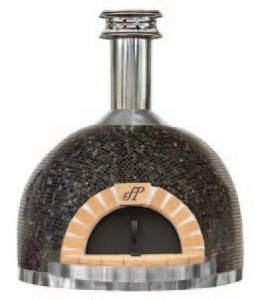 begins. Google “pizza oven suppliers” and you’ll notice that the word forno—which translates as “oven”—appears in many trade names. Examples include Forno Bravo, a company that builds and ships from Monterey; Forno Piombo, a father-and-son team that annually produces only 160 custom ovens (starting at $9,500) that are inspired by Tuscany but handcrafted in the Napa Valley; and Fontana Forni, which offers made-in-Italy models using techniques crafted by generations of the Fontana family.
begins. Google “pizza oven suppliers” and you’ll notice that the word forno—which translates as “oven”—appears in many trade names. Examples include Forno Bravo, a company that builds and ships from Monterey; Forno Piombo, a father-and-son team that annually produces only 160 custom ovens (starting at $9,500) that are inspired by Tuscany but handcrafted in the Napa Valley; and Fontana Forni, which offers made-in-Italy models using techniques crafted by generations of the Fontana family.
 Three billion pizzas are sold in the US each year accounting for $40 billion in revenues. During the pandemic, Pizza Hut and Domino’s saw delivery and off-premises sales soar by 21% and 36% respectively. Here are some other fun facts about pizza in America…
Three billion pizzas are sold in the US each year accounting for $40 billion in revenues. During the pandemic, Pizza Hut and Domino’s saw delivery and off-premises sales soar by 21% and 36% respectively. Here are some other fun facts about pizza in America…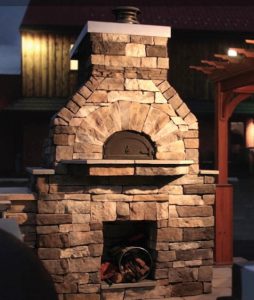 More important than finding a cool name is determining the type of oven appropriate for your situation. These are your four basic choices:
More important than finding a cool name is determining the type of oven appropriate for your situation. These are your four basic choices: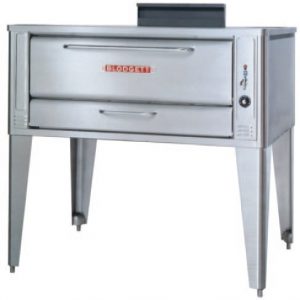 Ask any pizza aficionado and you’ll almost always be told that an authentic Italian pie can only come from a wood-fired oven with a traditional stone base. Although these ovens are not unheard-of in residential kitchens in New Jersey, you’re far more likely to find one a few steps outside the kitchen, on a patio or as part of an outdoor entertainment area. Would it surprise you to know that one of the top people in the outdoor pizza business is located in New Jersey? Decades-old Backyard Brick Ovens is right in the neighborhood, in Edison. Its owner, Scot Cosentino, is not only a master builder of wood-fired pizza ovens, but he takes pride in billing himself as a World Champion Pizza Maker. For more than 30 years, Cosentino has been designing, engineering and producing pizza ovens for sites ranging from private backyards to commercial restaurants.
Ask any pizza aficionado and you’ll almost always be told that an authentic Italian pie can only come from a wood-fired oven with a traditional stone base. Although these ovens are not unheard-of in residential kitchens in New Jersey, you’re far more likely to find one a few steps outside the kitchen, on a patio or as part of an outdoor entertainment area. Would it surprise you to know that one of the top people in the outdoor pizza business is located in New Jersey? Decades-old Backyard Brick Ovens is right in the neighborhood, in Edison. Its owner, Scot Cosentino, is not only a master builder of wood-fired pizza ovens, but he takes pride in billing himself as a World Champion Pizza Maker. For more than 30 years, Cosentino has been designing, engineering and producing pizza ovens for sites ranging from private backyards to commercial restaurants. Today, the
Today, the

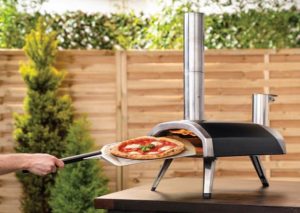 Back to business. If you prefer an indoor pizza installation, the options at the low end begin with electric, compact, and countertop ovens that can start as low as $299. The Ooni Fyra is a popular pick at that price point. If you are willing and able to make a $999 investment, the Breville Pizzaiolo model qualifies as a very high-temp “smart” pizza oven. With no unique set-up involved, these ovens can sit on any flat surface in the kitchen to quickly turn out crispy 12-inch pizzas, whether you’ve made them yourself or grabbed one out of the freezer.
Back to business. If you prefer an indoor pizza installation, the options at the low end begin with electric, compact, and countertop ovens that can start as low as $299. The Ooni Fyra is a popular pick at that price point. If you are willing and able to make a $999 investment, the Breville Pizzaiolo model qualifies as a very high-temp “smart” pizza oven. With no unique set-up involved, these ovens can sit on any flat surface in the kitchen to quickly turn out crispy 12-inch pizzas, whether you’ve made them yourself or grabbed one out of the freezer.
 A final thought on “cost.” As anyone who spent time in a college dorm can tell you, the price of pizza is measured both in dollars and pounds. Think of all the empty freezer cases during the height of the pandemic; those carbs had to go somewhere. Maybe that’s why Pelotons were on back order and people started buying those black-mirror home gyms. Alas, the uncomfortable truth about our favorite comfort food is that consuming a typical pie—whether all at once or as reheated leftovers—can easily surpass 2,000 calories…and depending on the quantity of cheese on the pie, more than 200 grams of fat.
A final thought on “cost.” As anyone who spent time in a college dorm can tell you, the price of pizza is measured both in dollars and pounds. Think of all the empty freezer cases during the height of the pandemic; those carbs had to go somewhere. Maybe that’s why Pelotons were on back order and people started buying those black-mirror home gyms. Alas, the uncomfortable truth about our favorite comfort food is that consuming a typical pie—whether all at once or as reheated leftovers—can easily surpass 2,000 calories…and depending on the quantity of cheese on the pie, more than 200 grams of fat.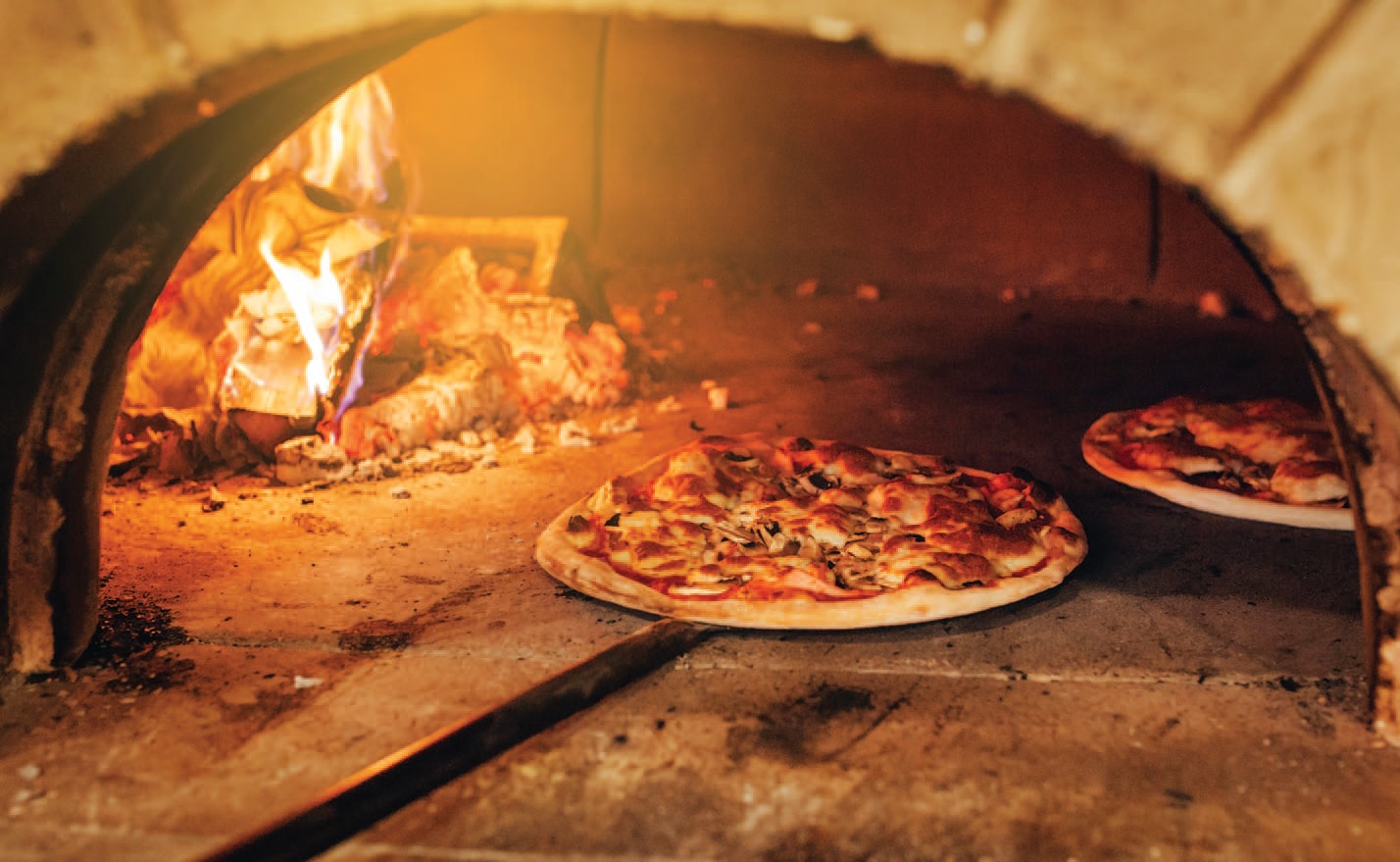

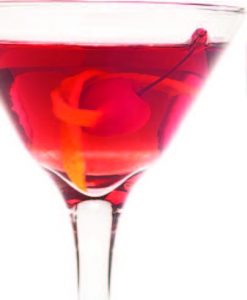 COCKTAIL HOUR
COCKTAIL HOUR SHERRY?
SHERRY?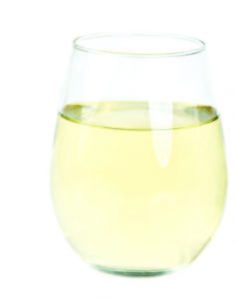 Feeling inspired to go old school? You don’t have to invest in a mint’s worth of single-malt Scotches. (Though checking out some small-batch Bourbons with proper pedigrees will add to your education.) You can ponder life’s most serious questions over a spot of Port (the value-priced Fonseca Bin 27 will do, and nicely) or toast the night to come with a Bordeaux wine glass filled with Lillet on the rocks, served with a twist of orange peel or a squirt of fresh lime juice. The aperitif from western France charms with its mysterious mix of wine, fruit and herbs—and it is mysterious, since the folks at Lillet long have refused to divulge the recipe. You can plow through Sitwell’s 1,000-page tome fortified by one of those acquired-taste spirits, Campari, Pernod or Aperol. You can even make a martini, as long as you follow the rules of cocktail crafting set down in the Jazz Age.
Feeling inspired to go old school? You don’t have to invest in a mint’s worth of single-malt Scotches. (Though checking out some small-batch Bourbons with proper pedigrees will add to your education.) You can ponder life’s most serious questions over a spot of Port (the value-priced Fonseca Bin 27 will do, and nicely) or toast the night to come with a Bordeaux wine glass filled with Lillet on the rocks, served with a twist of orange peel or a squirt of fresh lime juice. The aperitif from western France charms with its mysterious mix of wine, fruit and herbs—and it is mysterious, since the folks at Lillet long have refused to divulge the recipe. You can plow through Sitwell’s 1,000-page tome fortified by one of those acquired-taste spirits, Campari, Pernod or Aperol. You can even make a martini, as long as you follow the rules of cocktail crafting set down in the Jazz Age.

 If you miss impatiens—not on the market due to Downy Mildew—a great substitute with a similar color palette is caladium. While not a flowering plant, caladium has heart-shaped leaves in a variety of colors—white, red and pink. Caladium can tolerate the growing challenges of summer months. You can plant it in a dry site in the shade and forget about it.
If you miss impatiens—not on the market due to Downy Mildew—a great substitute with a similar color palette is caladium. While not a flowering plant, caladium has heart-shaped leaves in a variety of colors—white, red and pink. Caladium can tolerate the growing challenges of summer months. You can plant it in a dry site in the shade and forget about it.

 Kevin Bullard
Kevin Bullard


 While diet, eating healthy fresh produce, sensible exercise and good habits enhance our bodies, how do we feed and enrich our soul? To this end, the love of pets, offspring and friends, volunteerism and openness to the new play a large role. Martha draws much of her inspiration not only from reflecting on her own life, but also from her positive relationship and experience with her mother as she aged. Her love and admiration is palpable in these pages.
While diet, eating healthy fresh produce, sensible exercise and good habits enhance our bodies, how do we feed and enrich our soul? To this end, the love of pets, offspring and friends, volunteerism and openness to the new play a large role. Martha draws much of her inspiration not only from reflecting on her own life, but also from her positive relationship and experience with her mother as she aged. Her love and admiration is palpable in these pages.

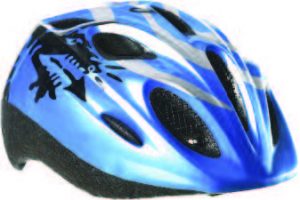 SAFETY WATCHDOGS
SAFETY WATCHDOGS
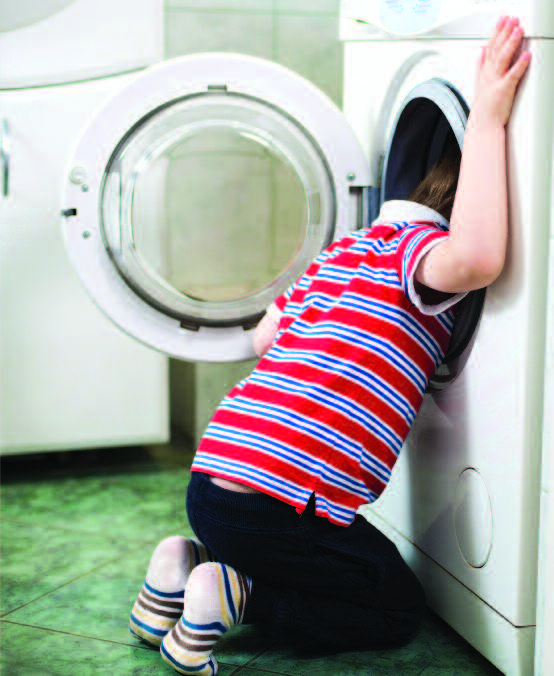



 2020 & BEYOND
2020 & BEYOND So what else will be in your kitchen in 2020 and beyond? Interactive cookbooks and recipes should be available on pop-up or drop-down video screens, or through tablets and other devices connected to your kitchen’s “brain.” There are folks looking at creating smart countertops with bio scanners that can assess your nutritional needs. Your fridge will keep track of what you’ve got, what you need, and what’s about to go bad—and connect with your smartphone when you’re at the grocery store. The most-used source of heat in your kitchen? It could very well be steam. And that smart countertop may include built-in extractors to transform the steam to water for other general uses after it flows through the heating element. Nothing wasted; everything gained.
So what else will be in your kitchen in 2020 and beyond? Interactive cookbooks and recipes should be available on pop-up or drop-down video screens, or through tablets and other devices connected to your kitchen’s “brain.” There are folks looking at creating smart countertops with bio scanners that can assess your nutritional needs. Your fridge will keep track of what you’ve got, what you need, and what’s about to go bad—and connect with your smartphone when you’re at the grocery store. The most-used source of heat in your kitchen? It could very well be steam. And that smart countertop may include built-in extractors to transform the steam to water for other general uses after it flows through the heating element. Nothing wasted; everything gained. STEAM POWER
STEAM POWER
